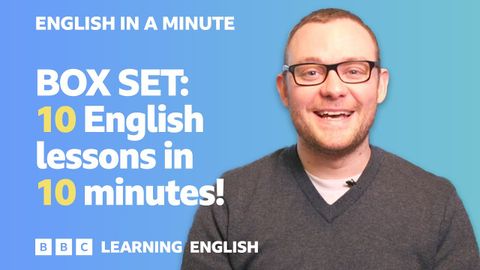跟著BBC Learning English十分鐘學會各種英文用法! (BOX SET: English In A Minute 13 – TEN English lessons in 10 minutes!)
Minjane 發佈於 2024 年 09 月 04 日  沒有此條件下的單字
沒有此條件下的單字US /ˈprɛznt/
・
UK /'preznt/
- adj.出席;在場的;目前的
- n.正在進行的;現在時態;目前的;禮物
- v.t.介紹;主持;介紹;展現;贈送
- v.i.出現
US /ˈstrʌk.tʃɚ/
・
UK /ˈstrʌk.tʃə/
- n. (c./u.)結構;建築物
- v.t.構成;組織
US /kəmˈpliːtli/
・
UK /kəmˈpli:tli/
US /ˈsɛntəns/
・
UK /'sentəns/
